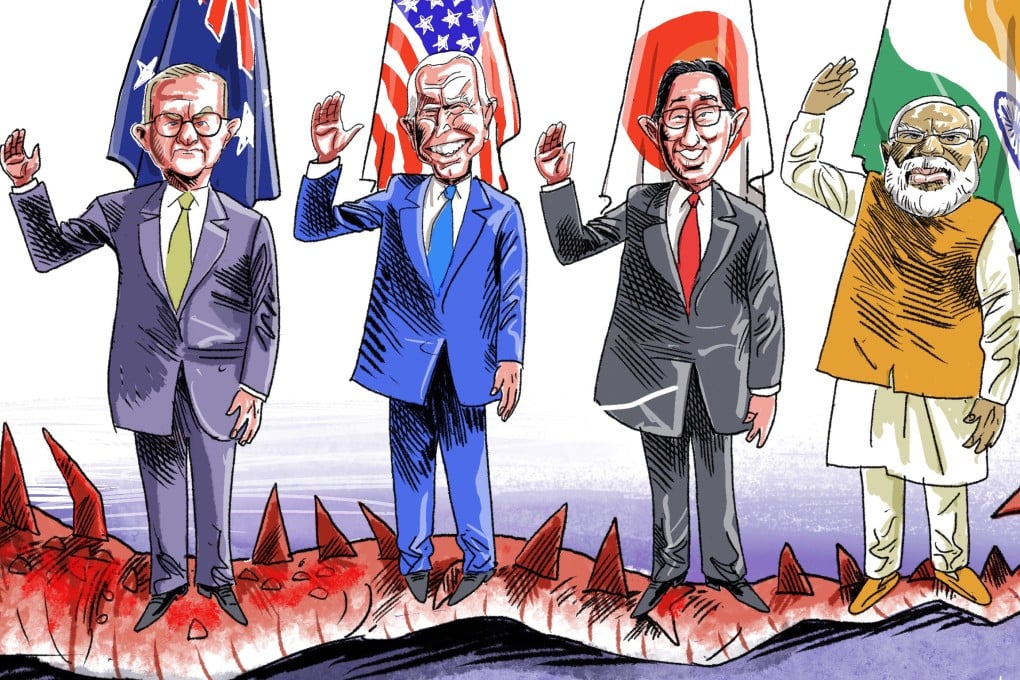Opinion | To understand the Quad’s real ambitions, ignore its empty rhetoric and look at its actions in the Indo-Pacific
- Behind the talk about upholding the rules, maintaining a free and open region and supporting Asean centrality lies a US-led resolve to protect interests
- Even the Quad’s aim to have responsibility for the Indo-Pacific is questionable – Australia is the only member that borders both oceans

In their words, the Quad intends to maintain a “free and open Indo-Pacific” and uphold “the rules-based international order”. This is code for the international system primarily built and dominated by the US and the West, and which preferentially benefits them. Quad leaders think it is increasingly under threat from a rising China and this must be deterred. They hope to do this by coordinating their strategy to constrain, contain and, if necessary, confront China.
The Quad’s agenda includes security issues like “upholding peace and stability in the Indo-Pacific maritime domain”, and “adherence to international law, particularly as reflected in the United Nations Convention on the Law of the Sea (Unclos)”.
While these factors may slow the Quad’s evolution into a full-blown anti- China defence arrangement, an increasingly aggressive China may be forcing one or more wary members to change their tune. America intends for the Quad to be a deterrent – China and many countries in the region see it this way, too.

